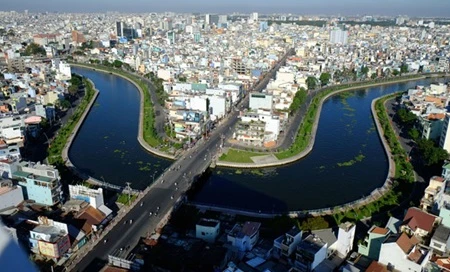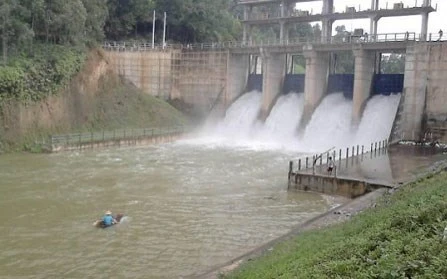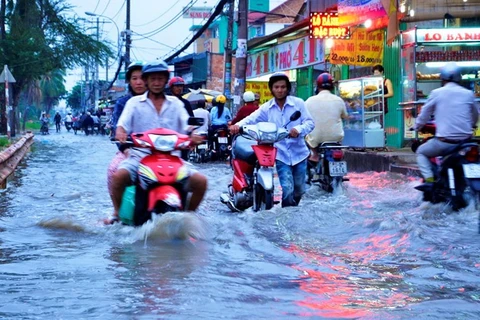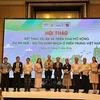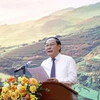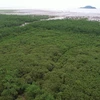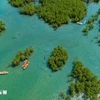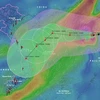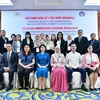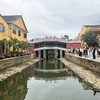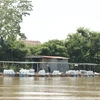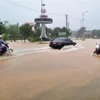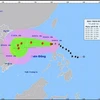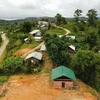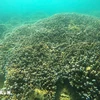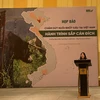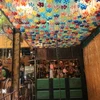 Workers and youth volunteers fish out rubbish along the Nhieu Loc-Thi Nghe Canal in HCM City. (Source: VNA)
Workers and youth volunteers fish out rubbish along the Nhieu Loc-Thi Nghe Canal in HCM City. (Source: VNA) HCM City (VNA) – HCM City will need 13.5 trillion VND (602.678 million USD) more for its programme to improve water bodies, which started in 2001 with the aim of cleaning up all canals, the People's Committee has said.
Chairman Nguyen Thanh Phong said the money would be used for Phase III of the Water Environment Improvement Project.
The Tau Hu, Ben Nghe Doi, and Te canals in districts 4,7, 8, and Binh Chanh will be improved to reduce flooding, use for water-related tourism and enhance the life quality of people living along them.
Late last week Phong solicited financial assistance from the Japanese Government at a meeting with a delegation from the Japan International Cooperation Agency (JICA).
He sought official development assistance loans of 8.7 trillion VND (390 million USD) from the Japanese Government, with the city bringing the remaining amount for the work.
The cost of construction, equipment, and project management is estimated at 9.5 trillion VND (426 million USD), while land acquisition is expected to cost 4.5 trillion VND (201 million USD).
The main works in the third phase include construction of embankments and roads with a combined length of 13.5 kilometres along the canals; improving the Doi and Te canals' drainage capacity by dredging them; and installation of a system to intercept wastewater in the Saigon South basin.
A wastewater treatment plant will also be built with a capacity of 170,000 cubic metres.
At the meeting with JICA, Phong stressed the need for the third phase of the project, saying it would greatly improve the environment and quality of life in the project areas, and help the city achieve its ambitious socio-economic targets.
He hailed JICA's contributions to developing the city's infrastructure over the years and hoped to receive the aid amount at the earliest.
Tran Trong Tuan, Director of the Department of Construction, said land acquisition might be the most difficult task in the third phase of the project.
Around 5,800 houses and 29 commercial buildings might have to be taken over, but most occupants are not ready to move since they lack the wherewithal to buy apartments available to them in resettlement areas.
He urged district people's committees and relevant departments to outline resettlement plans that ensure the affected people move to living places that are better than their old ones.
The JICA-sponsored Water Environment Improvement Project's Phase I, which began in 2001, eliminated flooding in the northern parts of the Tau Hu and Ben Nghe canals in districts 1, 3, and 5, the Thanh Da area in Binh Thanh district, and the Me Coc area in District 8.
It also built the Binh Hung Hoa wastewater treatment plant with a capacity of nearly 150,000 cubic metres per day.
Phase II ended flooding in districts 4, 6, and 8 and parts of District 10. It collected and treated sewage in districts 1, 3, and 5 and sections of districts 10 and 11. It also tripled the capacity of the Binh Hung Hoa wastewater plant to 450,000 cubic metres and brought wastewater treatment plants to central districts.
Luong Minh Phuc, Director of the Urban-Civil Works Construction Investment Management, said the project has already transformed the city by reducing flooding, improving transportation in the canals and making them clean and beautiful.-VNA
